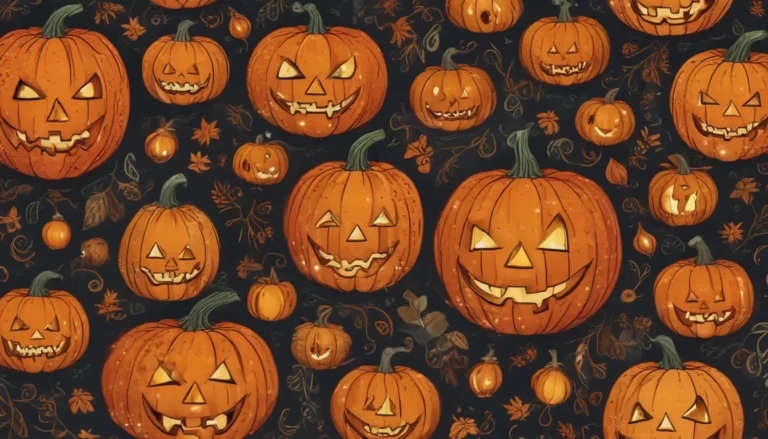The images in our articles may not match the content exactly. They are used to grab your attention, not to show the exact details in the text. The images complement the text but do not replace it.
Introduction
Welcome to the vibrant world of Hispanic culture, a rich tapestry woven with traditions, values, and history. In this blog post, we’ll dive into the heart of Hispanic heritage, uncovering fascinating facts and exploring the essence of this diverse and captivating culture. From the origins of Hispanic culture to modern-day celebrations, join us on a journey through time and space as we unravel the mysteries and beauty of Hispanic identity.
1. The Roots of Hispanic Culture
The origins of Hispanic culture can be traced back to the Age of Exploration, a time when European nations ventured into the unknown in search of trade, spices, and religious conquest. Countries like Spain, the Netherlands, and France embarked on epic voyages across the seas, laying the foundation for what would become Hispanic heritage.
Spaniards, in particular, sought to spread Christianity as they established settlements in distant lands. However, their methods were often brutal, as they viewed the local populations as uncivilized and in need of salvation. Despite the rich traditions, cultures, and technologies of these indigenous peoples, Europeans approached them with a sense of superiority.
Christopher Columbus, infamous for his exploratory voyages, aimed to find a new route to Asia but instead altered the course of history by initiating the colonization of other lands. His legacy, though controversial, left an indelible mark on the world, shaping the cultures of many countries under Spanish influence.
2. Unraveling Hispanic Heritage: Quick Facts
- Population: The United States is home to 62.1 million Hispanic Americans as of 2020, making them a significant and growing demographic.
- Celebration: National Hispanic Heritage Month is celebrated annually from September 15 to October 15, recognizing the contributions and influence of Hispanic Americans.
- Independence Days: Hispanic Americans of Mexican or Chilean descent observe their countries’ independence days during this month, showcasing their deep connection to their heritage.
- Cultural Influence: Mexico influences 61% of the Hispanic American population in terms of culture, traditions, and values, highlighting the strong ties within the community.
- Historical Significance: Countries like Costa Rica, El Salvador, Guatemala, Honduras, and Nicaragua commemorate their independence days on September 15, emphasizing the shared history and struggles of Hispanic nations.
3. Key Insights into Hispanic Culture
Language and Influence:
- Spanish ranks as the second most spoken language globally, reflecting the widespread impact of Hispanic culture.
- California boasts the largest population of Hispanic heritage in the United States, showcasing the cultural diversity within this community.
Cultural Identity:
- Hispanic Americans have distinct designations like Chicano and Boricua to denote their specific origins, highlighting the importance of regional identities.
- Family plays a central role in Hispanic culture, with elders assuming crucial roles as religious guides and peacemakers, emphasizing the value placed on familial bonds.
Historical Significance:
- Activists in the 1970s lobbied for the inclusion of Hispanics in the US Census, recognizing their contributions to society and the need for representation.
- Hispanics have made notable achievements in various fields, including sports, arts, and literature, showcasing their talent and influence.
4. Fascinating Tidbits about Hispanic Culture
- Sports Prowess: Hispanics have clinched the FIFA World Cup five times, demonstrating their exceptional skills and passion for soccer.
- Longevity: The emphasis on family and tradition contributes to longer lifespans among Hispanics, reflecting a deep-rooted respect for elders and the importance of strong social ties.
- Diversity within Diversity: Hispanic Jews form a unique segment within the Hispanic community, highlighting the diversity of cultural and religious backgrounds that exist within this vibrant group.
- Etymological Roots: The term “Hispanic” derives from Hispania, an ancient Roman territory encompassing the Iberian Peninsula, showcasing the historical depth and European influence on Hispanic culture.
5. Embracing Hispanic Traditions
One of the most enchanting aspects of Hispanic culture is the rich tapestry of traditions that have been passed down through generations. From vibrant festivals to cherished family customs, these traditions serve as a bridge between the past and the present, connecting Hispanics to their heritage and strengthening the bonds within their communities.
Cinco de Mayo: Celebrated on May 5th, Cinco de Mayo commemorates the Mexican army’s victory over the French forces at the Battle of Puebla in 1862. While often mistaken as Mexico’s Independence Day, this festive occasion has become a symbol of Mexican-American pride and is celebrated with parades, music, and delectable cuisine.
Day of the Dead: The Day of the Dead, or Día de los Muertos, is a beloved tradition that honors the memories of deceased loved ones. Originating in Mexico, this colorful celebration takes place on November 1st and 2nd, featuring intricate altars adorned with marigolds, sugar skulls, and offerings to guide the spirits back to the realm of the living.
Christmas Traditions: Hispanic Christmas traditions vary from country to country, but they all share a common theme of joy, family, and faith. From the festive posadas in Mexico to the lively parrandas in Puerto Rico, these celebrations bring communities together to sing, dance, and share in the spirit of the season.
Family Values: At the heart of Hispanic culture lies a deep reverence for family. The concept of familismo, or the prioritization of family over individual needs, is a cornerstone of Hispanic values. From large, multigenerational households to the emphasis on respecting elders, family ties are the threads that weave the fabric of Hispanic society.
6. The Fusion of Flavors: Hispanic Cuisine
No exploration of Hispanic culture would be complete without a tantalizing journey through its diverse and flavorful cuisine. From the spicy notes of Mexican dishes to the savory delights of Argentine asados, Hispanic gastronomy is a testament to the region’s rich history and culinary creativity.
Mexican Cuisine: Mexican cuisine, with its bold flavors and vibrant colors, has captured the hearts and taste buds of food lovers worldwide. From the classic tacos and enchiladas to the complex moles and tamales, Mexican dishes are a celebration of indigenous ingredients and Spanish influences.
Caribbean Flavors: The Caribbean islands, with their tropical climate and diverse cultural heritage, offer a unique blend of flavors. From the Cuban ropa vieja to the Puerto Rican mofongo, Caribbean cuisine showcases the fusion of African, European, and indigenous culinary traditions.
South American Specialties: South America boasts a wide array of culinary delights, each country contributing its own distinctive flavors. From the Peruvian ceviche to the Brazilian feijoada, South American cuisine is a testament to the region’s agricultural bounty and culinary ingenuity.
Fusion and Innovation: As Hispanic communities have spread across the globe, their culinary traditions have evolved and adapted, giving rise to exciting fusion dishes and innovative creations. From the Tex-Mex favorites of the American Southwest to the Nikkei cuisine of Peru, these culinary marvels showcase the dynamic nature of Hispanic gastronomy.
Conclusion
As we conclude our journey through the vibrant tapestry of Hispanic culture, it becomes evident that this is a heritage rich in tradition, values, and history. From the origins of Hispanic culture to the modern-day celebrations that keep its spirit alive, every aspect of this diverse community is a testament to the resilience, creativity, and passion of its people.
Whether you are of Hispanic descent or simply fascinated by this enchanting culture, embracing its traditions and delving into its history is an enriching experience. By understanding the roots of Hispanic heritage, celebrating its festivities, and savoring its culinary delights, we not only pay tribute to the past but also ensure that this vibrant culture continues to thrive for generations to come.
So let us raise a toast to the beauty and diversity of Hispanic culture, a tapestry woven with the threads of history, tradition, and pride. May we continue to explore its depths, appreciate its contributions, and celebrate the unique identity of the Hispanic community. ¡Viva la cultura hispana!






